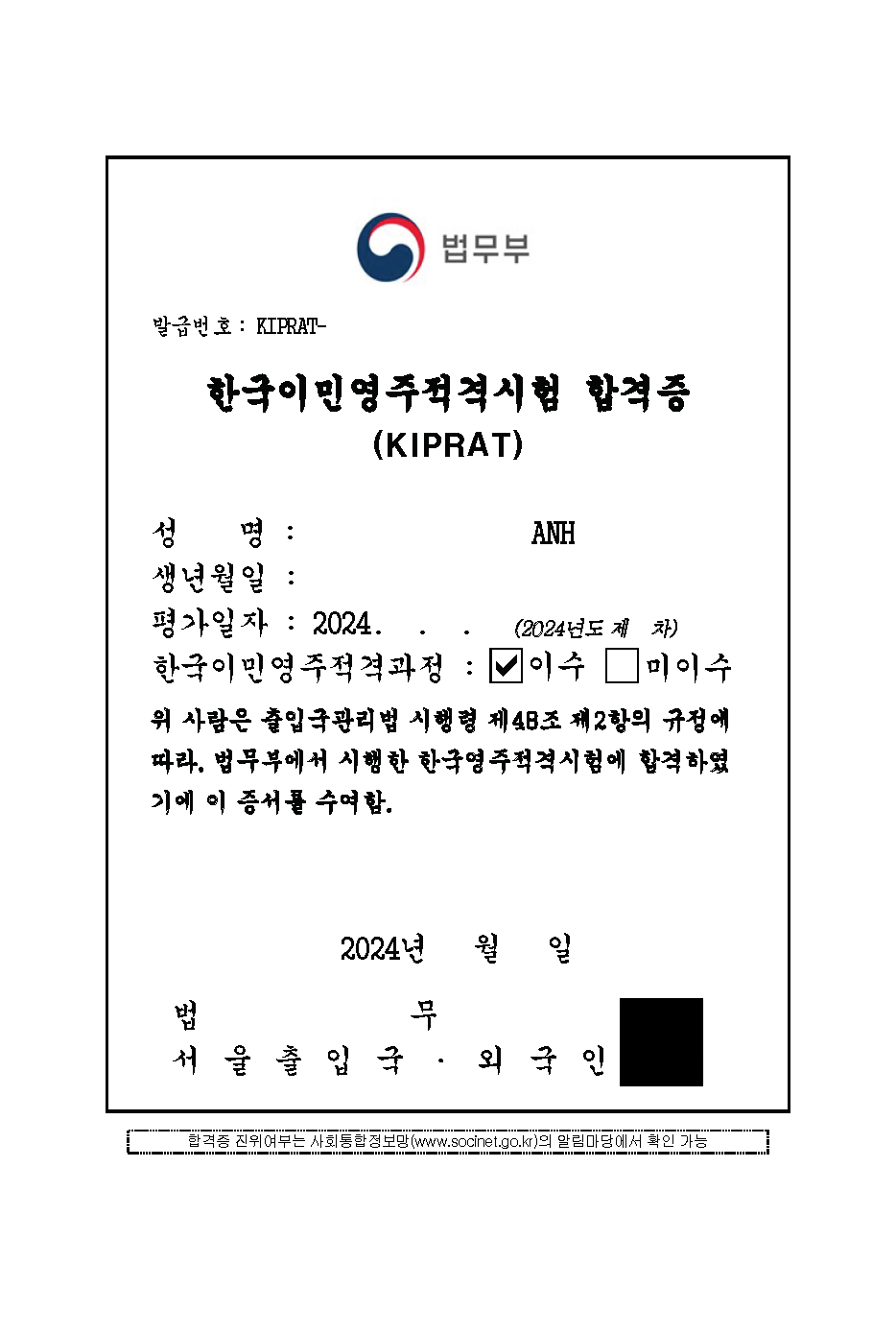For foreign students and workers aspiring to secure a work visa in Korea, the Korea Immigration and Integration Program (KIIP) plays a crucial role. Whether it’s a mandatory requirement or a valuable asset, KIIP can significantly boost your visa application.
For E9 visa holders aiming to upgrade to an E7 visa through the K-Point E74 system, passing the TOPIK (Test of Proficiency in Korean) or obtaining a KIIP certificate is essential. Likewise, students or job seekers with D2 or D10 visas can earn additional points toward their F2 visa applications by holding a KIIP certificate. This certification also enhances their chances when applying for an E7 visa.
I’ve outlined the key points you need to know about the Korea Immigration and Integration Program (KIIP). Kindly also visit the official KIIP website for registration details and any recent updates or changes.
1. What is the Korea Immigration & Integration Program (KIIP or 사회통합프로그램) ?
KIIP is an educational program designed to help immigrants integrate into Korean society by providing essential training in the Korean language, culture, and social norms. Completing the KIIP can not only add points to your visa applications but may also exempt you from certain naturalization exams, making it a valuable step toward securing permanent residency or citizenship.
2. How Are KIIP Classes Conducted?
- In-person Classes: These are held at institutions designated by the Ministry of Justice or local learning centers. Participants attend these sessions in person, allowing for direct interaction with instructors and peers.
- Online Classes: Conducted via real-time video lectures, online classes offer flexibility, especially for those living in remote areas, individuals with mobility issues, or expectant mothers. To participate, you’ll need a computer, headset, webcam, and a stable internet connection.
3. How to Enroll in the KIIP Program
After you sit the Initial Assessment exam, you will be assigned the class level that suits you. The initial assessment is held multiple times throughout the year, with special assessments for E9 visa holders and C-3-8 visa holders.
If you have a valid TOPIK score, you can shorten your study time by registering on the Social Integration Information Network -> gathering the necessary documents (like a TOPIK score certificate) -> visit your local Immigration Integration Support Center/KIIP operating institution or contactthem via email.
4. Evaluation
4.1. Mid-term Assessment (KLCT – Korea Language and Culture Test):
For those who have completed the 4th stage of KIIP or hold an intermediate Korean language education certificate. The test includes 30 multiple-choice questions and 5 oral questions, requiring a score of 60 out of 100 to pass and advance to the 5th stage.
4.2. Final Assessment (KIPRAT and KINAT):
- KIPRAT (Korea Immigration and Permanent Residence Aptitude Test or 영주용 종합평가):For applicants seeking permanent residency.
- KINAT (Korea Immigration and Naturalization Aptitude Test or 귀화용 종합평가): For those applying for naturalization. These tests evaluate your readiness to live permanently in Korea or become a citizen.
Since March 14, 2022, the Ministry of Justice has offered ongoing computer-based KIIP assessments and results are available within two days, though testing locations are currently limited to Gwangmyeong, Gyeonggi-do, and Daejeon. If you’ve successfully completed the KIIP, it’s advisable to explore further details about applying for work visas in Korea, as this certification can greatly enhance your chances of success.
5. Passing KIIP – Self Review
I enrolled in the KIIP program with a TOPIK Level 4 certification and started at class level 5 in 2022. The course was entirely online, and the instructor was incredibly approachable and supportive. She encouraged us to ask questions and gave helpful feedback on improving our Korean essay writing.
I passed the final exam, 영주용 종합평가, on my first attempt in January 2024. The exam felt fairly easy for me, as I spent about two weeks reviewing the lessons and taking some mock tests. I didn’t even need to purchase additional study materials for revision.
For anyone preparing for this test, I highly recommend using the following YouTube channels for free resources:
- 한국쌤‘s Youtube channel: https://www.youtube.com/@hangukssaem/playlists
- 주쌤한국어‘s Youtube channel: https://www.youtube.com/@joosaem_korean/playlists
These channels offer excellent lessons and advice, which helped me stay focused and confident throughout my preparation.

KIIP’s websites
Discover more from VNFLEX
Subscribe to get the latest posts sent to your email.